 W
WIsaac Allerton Sr., and his family, were passengers in 1620 on the historic voyage of the ship Mayflower. Allerton was a signatory to the Mayflower Compact. In Plymouth Colony he was active in colony governmental affairs and business and later in trans-Atlantic trading. Problems with the latter regarding colony expenditures caused him to be censured by the colony government and ousted from the colony. He later became a well-to-do businessman elsewhere and in his later years resided in Connecticut.
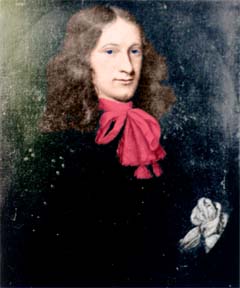 W
WWilhelmus Hendricksen Beekman — also known as William Beekman and Willem Beekman — was a Dutch immigrant to America who came to New Amsterdam from the Netherlands in the same vessel with Director-General and later Governor Peter Stuyvesant.
 W
WBethel-Christian Avenue-Laurel Hill Historical District is a Setauket, Long Island, New York neighborhood that was nominated for preservation as an endangered historic site in 2017.
 W
WJacob Binckes was a Dutch commodore.
 W
WAdriaen (Arjan) Block was a Dutch private trader, privateer, and ship's captain who is best known for exploring the coastal and river valley areas between present-day New Jersey and Massachusetts during four voyages from 1611 to 1614, following the 1609 expedition by Henry Hudson. He is noted for possibly having named Block Island, Rhode Island, and establishing early trade with the Native Americans, and for the 1614 map of his last voyage on which many features of the mid-Atlantic region appear for the first time, and on which the term New Netherland is first applied to the region. He is credited with being the first European to enter Long Island Sound and the Connecticut River, and to determine that Manhattan and Long Island are islands.
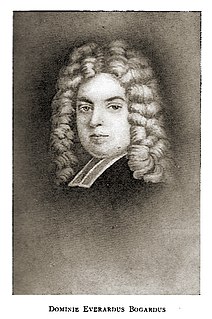 W
WThe Reverend Everardus Bogardus was the dominie of the New Netherlands, and was the second minister of the Dutch Reformed Church, the oldest established church in present-day New York, which was then located on Pearl Street at its first location built in 1633, the year of his arrival. Bogardus was, in fact, the second clergyman in all of the New Netherlands.
 W
WJan Evertsz Bout, was an early and prominent Dutch settler in the 17th century colonial province of New Netherland.
 W
WJonas Bronck was born around year 1600 and died in 1643. Bronck was an immigrant to the Dutch colony of New Netherland after whom the Bronx River, and by extension, the county and New York City borough of the Bronx are named. A mural at the Bronx County Courthouse depicting Bronck's arrival was created in the early 1930s by James Monroe Hewlett.
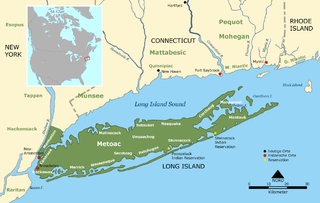 W
WThe Canarsee were a band of Munsee-speaking Lenape who inhabited the westernmost end of Long Island at the time the Dutch settled New Amsterdam in the 1620s and 1630s.
 W
WThe territory which would later become the state of New Jersey was settled by Dutch and Swedish colonists in the early seventeenth century. In 1664, at the onset of the Second Anglo-Dutch War, English forces under Richard Nicolls ousted the Dutch from control of New Netherland, and the territory was divided into several newly defined English colonies. Despite one brief year when the Dutch retook the colony (1673–74), New Jersey would remain an English possession until the American colonies declared independence in 1776.
 W
WJacques Cortelyou was an influential early citizen of New Amsterdam who was Surveyor General of the early Dutch colony. Cortelyou's main accomplishment was the so-called Cortelyou Survey, the first map of New York City, commonly called the Castello Plan after the location in a Tuscan palace where it was rediscovered centuries later.
 W
WStephanus van Cortlandt was the first native-born mayor of New York City, a position which he held from 1677 to 1678 and from 1686 to 1688. He was the patroon of Van Cortlandt Manor and was on the governor's executive council from 1691 to 1700. He was the first resident of Sagtikos Manor in West Bay Shore on Long Island, which was built around 1697. A number of his descendants married English military leaders and Loyalists active in the American Revolution, and their descendants became prominent members of English society.
 W
WArent van Curler, later van Corlaer, was the grandnephew of Kiliaen van Rensselaer. In 1637 Rensselaer commissioned him as his secretary and accountant at Rensselaer's patroonship Rensselaerswyck in the Dutch colony of New Netherland.
 W
WJasper Danckaerts was the founder of a colony of Labadists along the Bohemia River in what is now the US state of Maryland. He is known for his journal, kept while traveling through the territory which had previously been part of the New Netherland. Documenting his journey in 1679-1680, it offers a description of the landscape and the lifestyle of inhabitants of the region in the late 17th century.
 W
WThe Lenape, also called the Leni Lenape, Lenni Lenape and Delaware people, are an indigenous people of the Northeastern Woodlands, who live in the United States and Canada. Their historical territory included present-day New Jersey and eastern Pennsylvania along the Delaware River watershed, New York City, western Long Island, and the Lower Hudson Valley. Today, Lenape people belong to the Delaware Nation and Delaware Tribe of Indians in Oklahoma; the Stockbridge-Munsee Community in Wisconsin; and the Munsee-Delaware Nation, Moravian of the Thames First Nation, and Delaware of Six Nations in Ontario.
 W
WAdriaen Cornelissen van der Donck was a lawyer and landowner in New Netherland after whose honorific Jonkheer the city of Yonkers, New York, is named. Although he was not, as sometimes claimed, the first lawyer in the Dutch colony (an 'honor' that befell the lesser-known Lubbert Dinclagen who arrived in 1634, Van der Donck was a leader in the political life of New Amsterdam, and an activist for Dutch-style republican government in the Dutch West India Company-run trading post.
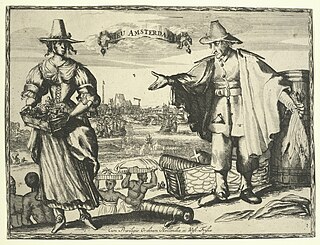 W
WDorothy Creole was one of the first black women to arrive in New York. She arrived in 1627. That year, three enslaved African women set foot on the southern shore of Manhattan, arriving in the Dutch colony of New Amsterdam. Property of the Dutch West India Company, these women were brought to the colony to become the wives of enslaved African men who had arrived in 1625. One of these women was named Dorothy Creole, a surname that she acquired in the New World, and likely began as a descriptive term.
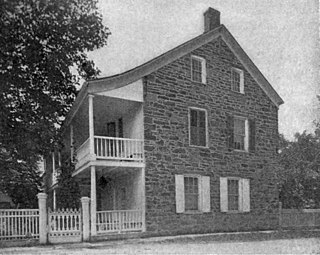 W
WLouis DuBois was a Huguenot colonist in New Netherland who, with two of his sons and nine other refugees, founded the town of New Paltz, New York. These Protestant refugees fled Catholic persecution in France, emigrating to the Die Pfalz, the Rhenish Palatinate, before going to New Netherland where they settled in Wiltwyck and Nieuw Dorp, settlements midway between New Amsterdam and Beverwyck before ultimately founding New Paltz.
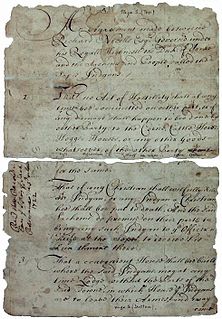 W
WThe Esopus tribe is a tribe of Lenape (Delaware) Native Americans who were native to what is now Upstate New York, specifically the region of the Catskill Mountains. Their lands included modern-day Ulster and Sullivan counties. The Lenape originally resided in the Delaware River Valley before their territory extended into parts of modern-day New York, Pennsylvania, New Jersey, and Eastern Delaware. The exact population of the Lenape is unknown but estimated to have been around 10,000 people in 1600. The Esopus people spoke an Algonquin dialect known as Munsee.
 W
WCornelis Evertsen the Youngest was a Dutch admiral from the 17th century.
 W
WWolfert Gerritse Van Couwenhoven, also known as Wolphert Gerretse van Kouwenhoven and Wolphert Gerretse, was an original patentee, director of bouweries (farms), and a founder of the New Netherland colony.
 W
WSamuel Godin, Godyn or Godijn was a wealthy merchant, originally from Southern Netherlands, trading on Spain, Brazil and the Levant. He was one of the administrators of the Noordsche Compagnie, involved in whaling, and of the Dutch West India Company. From 1620 he traded on New Netherland. His name was at first given to the Delaware Bay and he was one of the main investors in Zwaanendael. The colony did not last very long as it was plundered by Native Americans soon after its founding.
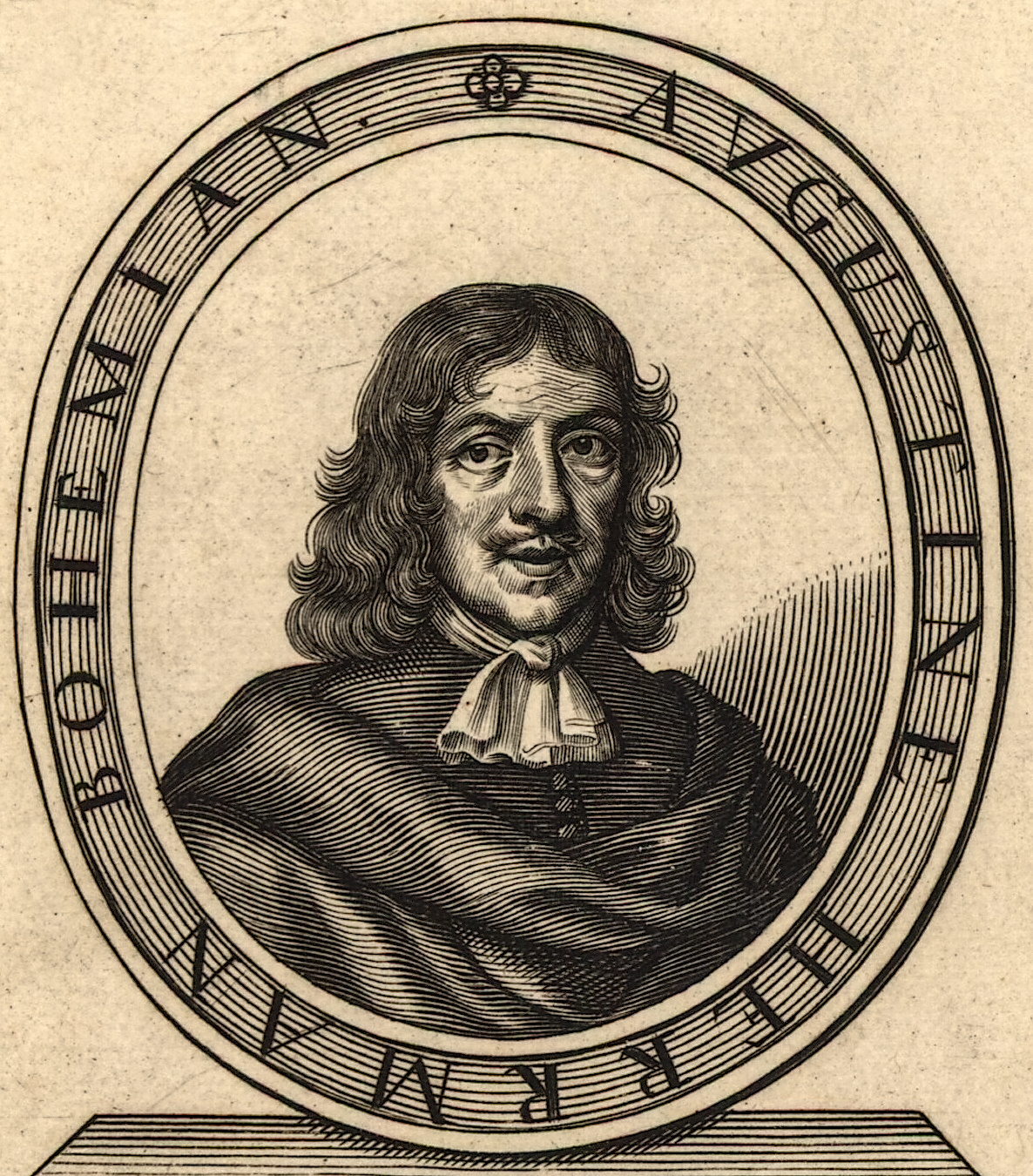 W
WAugustine Herman, First Lord of Bohemia Manor was a Bohemian explorer, merchant and cartographer who lived in New Amsterdam and Cecil County, Maryland. In the employment of Cecil Calvert, 2nd Baron Baltimore, he produced a remarkably accurate map of the Chesapeake Bay and Delaware Bay regions of North America, in exchange for which he was permitted to establish an enormous plantation that he named Bohemia Manor in what is now southeastern Cecil County, Maryland.
 W
WAndries Hudde (1608–1663) was a landowner and colonial official of New Netherland.
 W
WAnne Hutchinson was a Puritan spiritual advisor, religious reformer, and an important participant in the Antinomian Controversy which shook the infant Massachusetts Bay Colony from 1636 to 1638. Her strong religious convictions were at odds with the established Puritan clergy in the Boston area and her popularity and charisma helped create a theological schism that threatened to destroy the Puritans' religious community in New England. She was eventually tried and convicted, then banished from the colony with many of her supporters.
 W
WAnthony Janszoon van Salee (1607–1676) was an original settler of and prominent landholder, merchant, and creditor in New Netherland. Van Salee is believed to be the son of Jan Janszoon, a Dutch pirate who after 1619 served a Moorish state on the Barbary Coast. His mother Margarita was Moorish and Van Salee was a Muslim; he may have been the first of this background to settle in the New World.
 W
WJochem Pietersen Kuyter was an early colonist to New Netherland, and one of the first settlers of what would become Harlem on the island of Manhattan. He became an influential member of the community and served on the citizen boards known as the Twelve Men, the Eight Men and the Nine Men.
 W
WThe Lenape, also called the Leni Lenape, Lenni Lenape and Delaware people, are an indigenous people of the Northeastern Woodlands, who live in the United States and Canada. Their historical territory included present-day New Jersey and eastern Pennsylvania along the Delaware River watershed, New York City, western Long Island, and the Lower Hudson Valley. Today, Lenape people belong to the Delaware Nation and Delaware Tribe of Indians in Oklahoma; the Stockbridge-Munsee Community in Wisconsin; and the Munsee-Delaware Nation, Moravian of the Thames First Nation, and Delaware of Six Nations in Ontario.
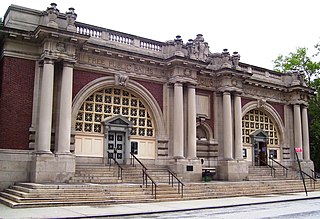 W
WAsser Levy, also known as Asher Levy, was one of the first Jewish settlers of the Dutch colony of New Amsterdam on Manhattan Island.
 W
WManhattoe/Manhattoes is a term describing a place and, mistakenly, a people. The place was the very southern tip of Manhattan island in the time of the Dutch Colonization of what became New Amsterdam there. The people were a band of the Wappinger native to southwest Westchester County known as the Weckquaesgeek, who controlled the upper three-quarters of the island as a hunting grounds.
 W
WMetoac is a name used by some to describe the Munsee-speaking Lenape and Pequot Native Americans on what is now Long Island in New York state. The term, a geographic rather than political grouping, was adopted by amateur anthropologist and U.S. Congressman Silas Wood in the mistaken belief that the various bands on the island comprised distinct tribes.
 W
WThe Mohawk people are the most easterly tribe of the Haudenosaunee, or Iroquois Confederacy. They are an Iroquoian-speaking indigenous people of North America, with communities in northern New York State and southeastern Canada, primarily around Lake Ontario and the St Lawrence River. As one of the five original members of the Iroquois League, the Mohawk are known as the Keepers of the Eastern Door – the traditional guardians of the Iroquois Confederation against invasions from the east.
 W
WThe Mohicans are an Eastern Algonquian Native American tribe that was Algonquian-speaking. As part of the Eastern Algonquian family of tribes, they are related to the abutting Lenape, who occupied territory to the south as far as the Atlantic coast. The Mohicans occupied the upper tidal Hudson River Valley, including the confluence of the Mohawk River and into western New England centered on the upper Housatonic watershed. After 1680, due to conflicts with the Mohawk during the Beaver Wars, many were driven southeastward across the present-day Massachusetts western border and the Taconic Mountains to Berkshire County around Stockbridge, Massachusetts.
 W
WDeborah, Lady Moody is notable as the founder of Gravesend, Brooklyn, and is the only woman known to have started a village in colonial America. She was the first known female landowner in the New World. As a wealthy titled woman, she had unusual influence in New Netherland, where she was respected. In the Massachusetts Bay Colony, where she had first settled after leaving England because of persecution as an Anabaptist, she had been described by contemporaries as "a dangerous woman" and chose excommunication over giving up her beliefs.
 W
WKnight Michiel Reiniersz Pauw was a burgemeester of Amsterdam and a director of the Dutch West India Company (WIC).
 W
WAbraham de Peyster was the 20th Mayor of New York City from 1691 to 1694, and served as Governor of New York, 1700-1701.
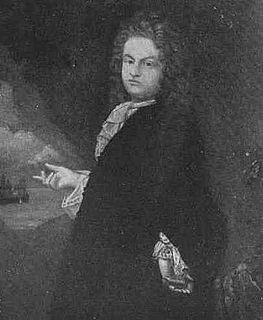 W
WFrederick Philipse, first Lord of the Manor of Philipseborough (Philipsburg) and patriarch of the Philipse family, was a Dutch immigrant to North America of Bohemian heritage. A merchant, he arrived in America as early as 1653. In 1662 he engaged in a marriage to a wealthy and driven widow, Margaret Hardenbrook de Vries. Together, and variously in league with slavers, pirates, and other undesirables, the couple combined their industry to amass a fortune.
 W
WSarah Rapelje was the first European Christian female born in New Netherland.
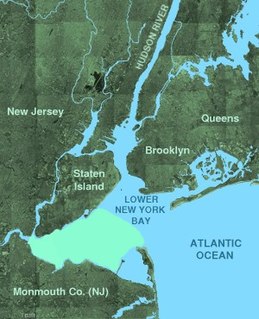 W
WThe Raritan were bands of the Lenape people living around the Raritan River and its bay, in what is now northeastern New Jersey and Staten Island, New York.
 W
WJan Baptist van Rensselaer was the second son of Kiliaen van Rensselaer, the first Patroon of the Manor of Rensselaerswyck.
 W
WJeremias van Rensselaer was the third son of Kiliaen van Rensselaer, one of the founders and directors of the Dutch West India Company who was instrumental in the establishment of New Netherland and was created the first patroon of the Manor of Rensselaerswyck. Jeremias van Rensselaer was the acting patroon of the Manor of Rensselaerswyck, and the first of his family to establish himself permanently in America.
 W
WKiliaen van Rensselaer was a Dutch diamond and pearl merchant from Amsterdam who was one of the founders and directors of the Dutch West India Company, being instrumental in the establishment of New Netherland.
 W
WArent Philipse Schuyler was a member of the influential Schuyler family. He was a surveyor, Native American trader, miner, merchant, and land speculator.
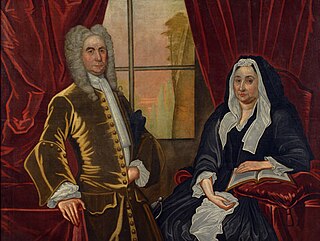 W
WJohannes Schuyler was a prominent American of Dutch ancestry who served as the 10th Mayor of Albany, New York from 1703 to 1706, and later was a member of the provincial assembly. He was the paternal grandfather of U.S. Senator Philip Schuyler and Mayor Abraham Cuyler.
 W
WPieter Schuyler was the first mayor of Albany, New York. A long-serving member of the executive council of the Province of New York, he acted as governor of the Province of New York on three occasions – twice for brief periods in 1709, after the death of Lord Lovelace, and also from 1719 to 1720, after Robert Hunter left office.
 W
WCornelius Steenwyck served two terms as Mayor of New York City, the first from 1668 to 1672 (or 1670, and the second from 1682 to 1684.
 W
WOlof Persson Stille (1610–1684) was a pioneer settler of New Sweden, a colony along the lower reaches of the Delaware River in North America claimed by Sweden from 1638 to 1655. Stille served as the first chief justice of the Upland Court, the governing body of the New Sweden colony following Dutch West India Company annexation from Swedish colonial rule.
 W
WPenelope Van Princis Kent Stout of Amsterdam, Netherlands. Was the first female white settler of Monmouth County, New Jersey. According to History of the Baptists she lived to the age of 110.
 W
W'Thomas or Tomys Swartwout was one of the earliest importers of tobacco from New Netherland to western and northern Europe, one of earliest settlers of New Netherland, and a founder of Midwood, Brooklyn, New York.
 W
WThe Tappan were a Lenape people who inhabited the region radiating from Hudson Palisades and New York – New Jersey Highlands in at the time of European colonialization in the 17th century.
 W
WJohn Underhill was an early English settler and soldier in the Massachusetts Bay Colony, the Province of New Hampshire, where he also served as governor; the New Haven Colony, New Netherland, and later the Province of New York, settling on Long Island. Hired to train militia in New England, he is most noted for leading colonial militia in the Pequot War (1636-1637) and Kieft's War which the colonists mounted against two different groups of Native Americans. He also published an account of the Pequot War.
 W
WAnthony Van Corlaer was a trumpeter for the garrison in New Amsterdam. According to legend, in 1642 Peter Stuyvesant, having learned of an English expedition on its way to seize the colony, ordered Van Corlaer to rouse the villages along the Hudson River with a trumpet call to war. It was a stormy evening when Van Corlaer arrived at the upper end of the island, and as no ferryman was available Van Corlaer vowed to swim across the Harlem River "in spite of the devil", but drowned in the attempt. Some sources state that Spuyten Duyvil, an inlet between Manhattan and the Bronx, is named after this incident.
 W
WDavid Pieterszoon de Vries was a Dutch navigator from Hoorn.
 W
WThe Wappinger were an Eastern Algonquian-speaking tribe from New York and Connecticut. They lived on the east bank of the Hudson River eastward to the Connecticut River valley.
 W
WThe Wecquaesgeek were a Munsee-speaking band of Wappinger people who once lived along the east bank of the Hudson River in the southwest of today's Westchester County, New York.